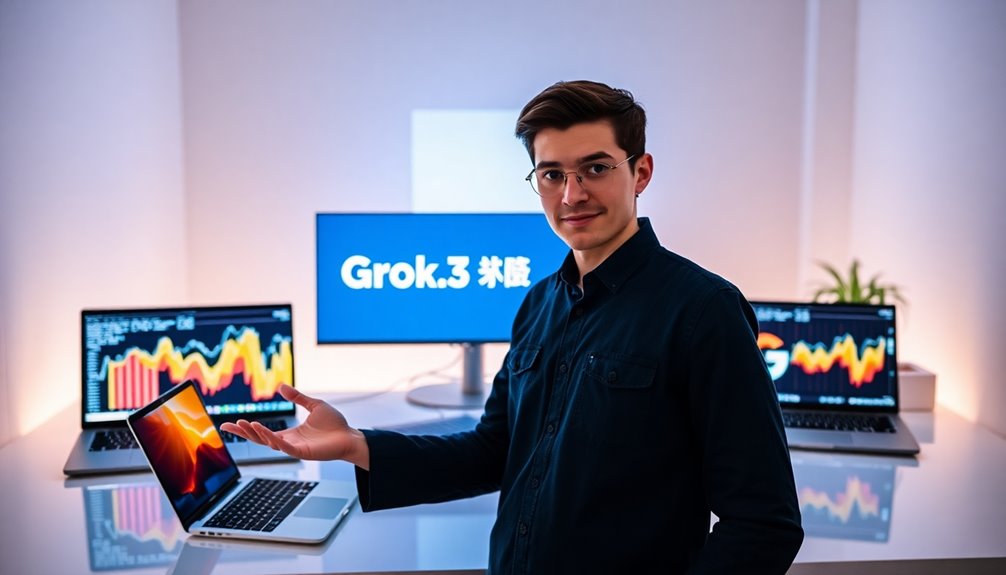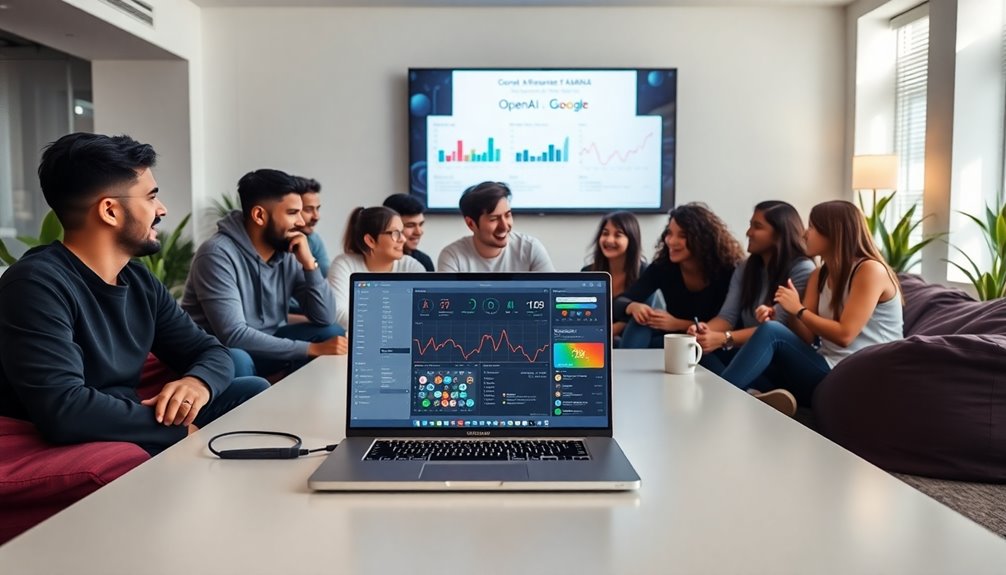Xai's Grok-3 has entered the AI arena, and it's not just another player. With its tenfold increase in computing power and a robust network of GPUs, it's designed to tackle complex tasks. You might wonder how its unique features, like real-time data integration, stack up against OpenAI and Google. The competition is heating up, and the implications for users could be significant. What does this mean for the future of AI?

As Grok-3 enters the competitive landscape of AI, it's clear that this model is set to challenge established giants like OpenAI and Google. With its advanced capabilities, Grok-3 leaps ahead of its predecessor, Grok-2, boasting ten times the computing power and utilizing a massive data center equipped with 200,000 GPUs. This significant investment in resources translates into a model that not only excels in benchmarks but also offers unique features that set it apart.
One key aspect of Grok-3 is its integration of real-time data from X (formerly Twitter). This enables the model to answer a wide range of questions with up-to-date information, enhancing its versatility. The introduction of the DeepSearch feature further amplifies its capabilities, allowing Grok-3 to scan the internet for detailed answers that can enrich user experience.
Grok-3's integration of real-time data from X enhances its versatility, while DeepSearch enriches user experience with detailed internet answers.
You'll find that Grok-3's reasoning models shine in mathematical and scientific problems, rivaling OpenAI's o3-mini while demonstrating strong coding abilities that outperform competitors. Additionally, Grok-3's ability to solve physics problems showcases its advanced reasoning skills, positioning it as a formidable contender in the AI market. Its performance in scientific reasoning could benefit from innovations in quantum computing advancements, which are expected to revolutionize data processing.
In benchmark tests, Grok-3 has shown impressive results, outpacing models like GPT-4o and Gemini in assessments like AIME and GPQA. Its performance in the chatbot arena is particularly noteworthy, achieving high scores that place it ahead of offerings from OpenAI and Google. However, you should keep in mind that while Grok-3 has strong benchmarks, its real-world performance may still evolve as it undergoes further training.
The rivalry between Grok-3 and OpenAI isn't just a matter of technical specs; it's also about differences in approach. Grok-3 aims to be more unfiltered and less politically correct compared to OpenAI's models. This divergence in style is reflected in its diverse training data, which includes a broad array of sources, potentially affecting its neutrality.
Interestingly, even OpenAI founder Andrej Karpathy has recognized Grok-3's logical reasoning capabilities.
Currently, Grok-3 is available to X Premium+ subscribers, with plans for broader access. The SuperGrok subscription offers enhanced features for users, while the anticipated API launch will broaden developer access, allowing for more innovative applications. Although the voice mode was delayed, it reflects Grok-3's commitment to continuous development.










